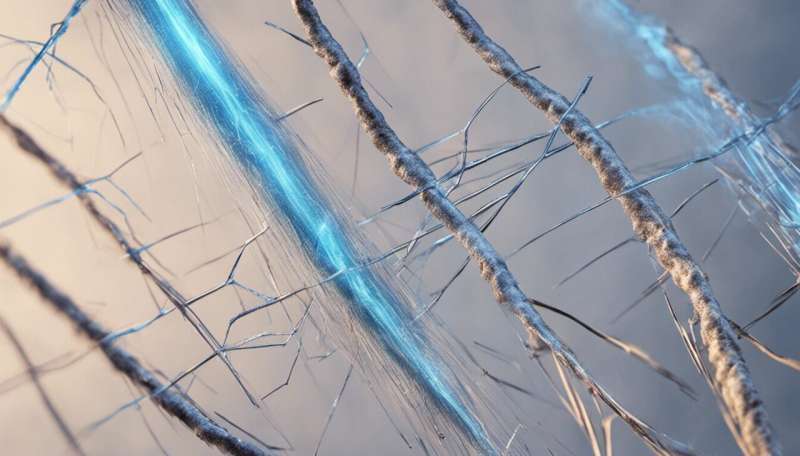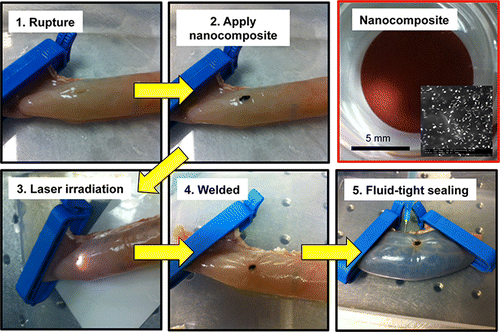Improved material for 'laser welding' of tissue in intestinal surgery

A new "solder" for laser welding of tissue during surgical operations has the potential to produce stronger seals and expand use of this alternative to conventional sutures and stapling in intestinal surgery, scientists are reporting. Their study, which involves use of a gold-based solder, or sealing material, appears in the journal ACS Nano.
Kaushal Rege and colleagues explain that laser tissue welding (LTW) is a "stitch-free" surgical method for connecting and sealing blood vessels, cartilage in joints, the liver, the urinary tract and other tissues. LTW involves use of laser light to heat tissue, causing changes that enable the sides of incisions to seal. LTW has advantages over sutures or staples, such as a shorter operation time and reduced scarring. However, it forms weak seals that can be a special problem in intestinal surgery. Leaks of intestinal contents can cause extremely painful and life-threatening abdominal infections. The scientists set out to develop an improved form of LTW that produces strong seals.

They describe development and successful laboratory tests of the material, a tissue solder called a plasmonic nanocomposite. It has gold nanorods in it that are so small that that 100,000 could fit in the period at the end of this sentence. The gold nanorods are wrapped inside a material that makes it more elastic so it can move with the body. They found that when the material was used as a light-activated solder for laser-welding cuts in pig intestines, it formed a strong, "liquid-tight" but elastic seal, preventing bacteria from leaking out. "Taken together, these plasmonic nanocomposites are exciting materials for laser-based tissue repair," say the researchers. The researchers plan to investigate these materials in animals with intestinal injury.
More information: Laser Welding of Ruptured Intestinal Tissue Using Plasmonic Polypeptide Nanocomposite Solders, ACS Nano, 2013, 7 (4), pp 2988–2998. DOI: 10.1021/nn303202k
Abstract
Approximately 1.5 million people suffer from colorectal cancer and inflammatory bowel disease in the United States. Occurrence of leakage following standard surgical anastomosis in intestinal and colorectal surgery is common and can cause infection leading to life-threatening consequences. In this report, we demonstrate that plasmonic nanocomposites, generated from elastin-like polypeptides (ELPs) cross-linked with gold nanorods, can be used to weld ruptured intestinal tissue upon exposure to near-infrared (NIR) laser irradiation. Mechanical properties of these nanocomposites can be modulated based on the concentration of gold nanorods embedded within the ELP matrix. We employed photostable, NIR-absorbing cellularized and noncellularized GNR–ELP nanocomposites for ex vivo laser welding of ruptured porcine small intestines. Laser welding using the nanocomposites significantly enhanced the tensile strength, leakage pressure, and bursting pressure of ruptured intestinal tissue. This, in turn, provided a liquid-tight seal against leakage of luminal liquid from the intestine and resulting bacterial infection. This study demonstrates the utility of laser tissue welding using plasmonic polypeptide nanocomposites and indicates the translational potential of these materials in intestinal and colorectal repair.
Journal information: ACS Nano
Provided by American Chemical Society


















